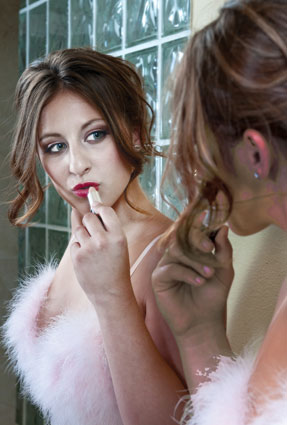|
A strong majority of Indians view themselves as fair and
just 2% perceive themselves as dark, according to a Little India
analysis of nearly 1.67 million profiles on India’s largest matrimonial site.
An examination of Bharat Matrimony determined
that 57% of the profiles were self-classified as fair or very fair and another
33% as wheatish or wheatish brown.
The figures may seem incongruent in a community
that hardly fits into the fair skinned spectrum on the global scale, but it
underscores the widespread affinity for fair skin tone in a nation that has
witnessed exploding demand for skin lightening creams in recent years. It is
reflected in even the complexion choices that websites like Bharat Matrimony
offer users, four of which — very fair, fair, wheatish, wheatish brown — are
skewed to the white end of the spectrum and just one — dark — to the black
tone. Shaadi.com, another prominent matrimonial Indian website, likewise,
offers users four complexion choices, three on the light end — very fair, fair,
wheatish — and just one dark.
 |
The majority fairer classification was consistent
across all Indian age groups, sub ethnicities and gender. Even a majority of
South Indians, such as Malyalees, Tamilians and Telugus, who are substantially
darker than North Indians, such as Punjabis, Gujaratis and Hindi-belt
Northerners, classified themselves as fair or very fair. Indian women had a
slightly higher propensity (59%) than men (56%) to list themselves as fair or
very fair as did North Indians (62%) compared to South Indians (54%). Men and
South Indians were twice as likely to identify themselves as dark than women or
North Indians, but they constituted a tiny sliver of all Indians: 2% versus 1%.
Anika Sharma, business head for Bharat Matrimony
for North America and Europe, insisted that the data does not imply that people
misrepresent or lie about their complexion. “It is the way they perceive
themselves, may be you can say that it is in an aspirational way.” Fair skin,
she said, is widely preferred among Indians, which gets reflected in
matrimonial ads.
Indians living in the United States, Indian
American women especially, were more likely to classify themselves as very
fair, an influence no doubt of the predominantly White culture in which they
find themselves. 15% of Indian American women and 11% of Indian American men
classified themselves as very fair compared to 11% of women and 8% of men in
India.
Sunaina Maira, associate professor of Asian
American Studies at the University of California, Davis, said: “This is
probably due to the convergence of American racism which also favors white skin
and denigrates blackness, with Indian notions of color prejudice. I think
Indians want to pass as white as much as possible in the US and there is a long
history of this in court cases by Indians in the US as well, when citizenship
was denied to non-whites.”
Madhulika Khandelwal,
director of the Asian American Center at Queens College, said she was “not
surprised” that Indian Americans self identify themselves as fairer than people
in India, as they are immersed in a culture “where Whites are not just in a
majority, but they are also higher in the racial hierarchy.” As a result,
Indians don’t seek to associate with Blacks or other minority groups, she says,
seeking out “affinity instead with the dominant group.” She says, “I have often
heard comments that someone does not look Indian, like more European or South
European.”
Khandelwal acknowledges that fair skin is a
major factor in the Indian matrimonial market and is particular to it, but even
there it is mediated by other factors. The motive of self-identifying oneself
as fair serves to expand the pool, she says, because it is an important factor
in making the first cut. Bharat Matrimony’s Sharma agrees, “There is no
question about it that if someone described themselves as dark, you will not
even approach them or take it the parents, absolutely.”
But Khandelwal insists that skin tone is
diffused by caste, religion, gender and other considerations later in the
process of mate selection. She cites a “humorous example” from an experience
accompanying a friend meeting a family for a prospective groom for her sister.
The inevitable question about her sister’s complexion was brought up. Later in
the conversation, when the same question was asked about the boy, the family
became more defensive, discounting the skin tone’s relevance, explaining, “He
varies, he is dark in the summer, but light in the winter.”
The Indian obsession with skin tone, it seems,
is tuned even to the seasons.

|



